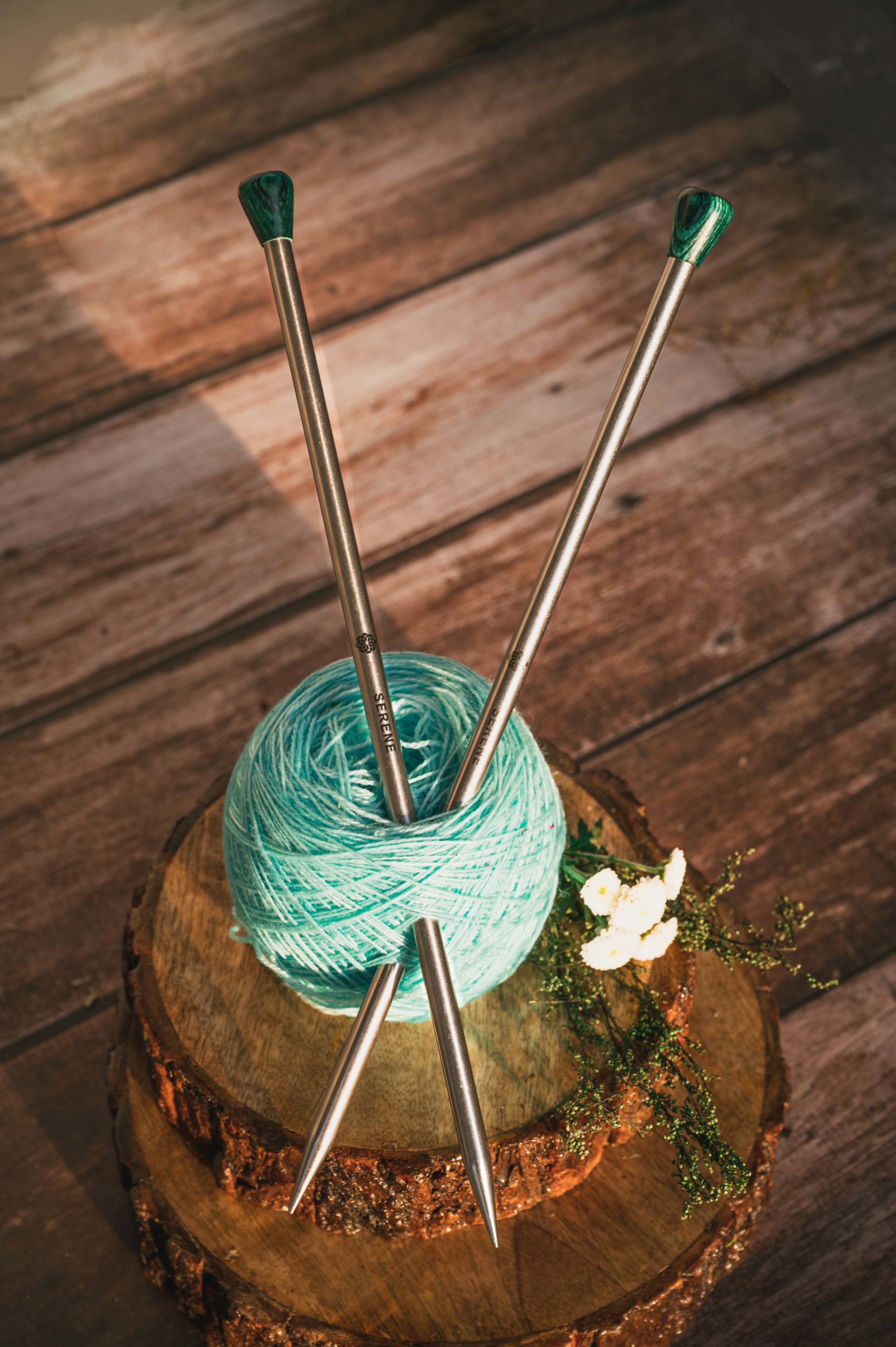Double knitting is an exciting technique perfect for colourwork. You create two layers of fabric at the same time with the same pair of knitting needles. One colour, say for example A faces one side (right side of the project) and the other colour, take for example B faces the other side. Both layers face out while the wrong sides face each other. The finished knitted fabric is entirely reversible and twice as warm.
For pattern designers, double knitting technique is a great opportunity as it is easy to create a fabric with two colours of different fibers with visible sides and no wrong sides. For knitters who love two-color knitting, double knitting method is free from the constraints of strands and floats, big motifs, and large areas of one single color. The technique works for all kinds of projects such as a warm sweater, scarf, pillow covers, and pretty much everything. Stainless steel knitting needles are a good choice when working with two different colours of yarn as well as smooth knitting.
How to get started with double knitting
Getting started with double knitting is not that difficult. You are using the same pair of knitting needles and yarn while following the pattern of k1 (knit), p1 (purl) till the end of the row or round. Here while you make k1 with one colour, you make p1 with the other. The working of the stitches k1 and p1 usually makes ribbing but with the use of two yarn, it creates a stocking stitch pattern on each side.
For every knit stitch, remember to bring both yarns to the back of the work and for every purl stitch, always bring both yarns to the front. Keep the yarns of both colours together at all times. Take them as one, even though its only one yarn being used when working the stitch. Follow the pattern to move both yarns back and forth for every stitch. The knit stitches create the front of the knitting project (the one facing you) while the purls are forming the layer of fabric on the other side (the backside of the knitting project).
Instructions on How to Double Knit
Cast On – Take the knitting needles is the size and type mentioned in the pattern. For practice you can use any single pointed knitting needle. Double pointed needle also work but knit with only two at a time. Circular needles work for both knitting styles and any size project with the right cable length. You have to make double of the usual number of stitches – one in each color, alternating across the row. Choose the cast on method as mentioned in the pattern or whatever suits the project. Long tail cast on works for most projects but calculate carefully the yarn needed to ensure that you do not run of yarn. Make sure to make a slip knot with both yarns. A trick for smooth knitting in double-knit technique is to cast two extra stitches in both yarn colours.
A quick tutorial is cast one stitch with A and then B, continue till the end of the row. If you are working on a pattern that requires back and forth knitting then stop at 2 extra stitches. Turn the needle arrangement to start knitting. If you are knitting in the round, join the stitches with an invisible swap join or any other way you prefer. Make sure to slip two stitches, one of each colour yarn.
Knitting the first row or round – Start knitting on k1, p1 pattern. Bring both yarns to the back for knit and to the front to purl. Work only one stitch at a time, but make sure to have both yarns on the same side of the knitting needle (front or back).
For neat edges, slip two stitches one of each colour. Continue this pattern until you’ve had a practice square like a gauge swatch or like the pattern mentions.
After a few rows and round, you will notice both sides of the knitted fabric are a stocking stitch pattern of two layers. The stitches might curl as is the nature of the stitch pattern. There are a few tricks for neat edges, you can choose any.
Finishing – For a proper finish of the knitting project, you need to properly cast off the stitches. Like the cast on, hold both strands of yarn as one. Cast the stitches off the knitting needles knitwise or purlwise according to the pattern. Make sure to repeat the stitches with both colours of yarn. Repeat until there are two stitches left. Using both strands of yarn, knit two together and cast off.
Weave in the yarn ends with a darning needle. Thread both yarns through the same two stitches.
Block your pattern. Choose blocking tools and methods according to your yarn. Steam blocking is the best to work with.
With the two different color sides to the knitted fabric, you have two different colors and designs, bringing much more versatility to your craft. Ready for double knitting?
RELATED BLOGS

